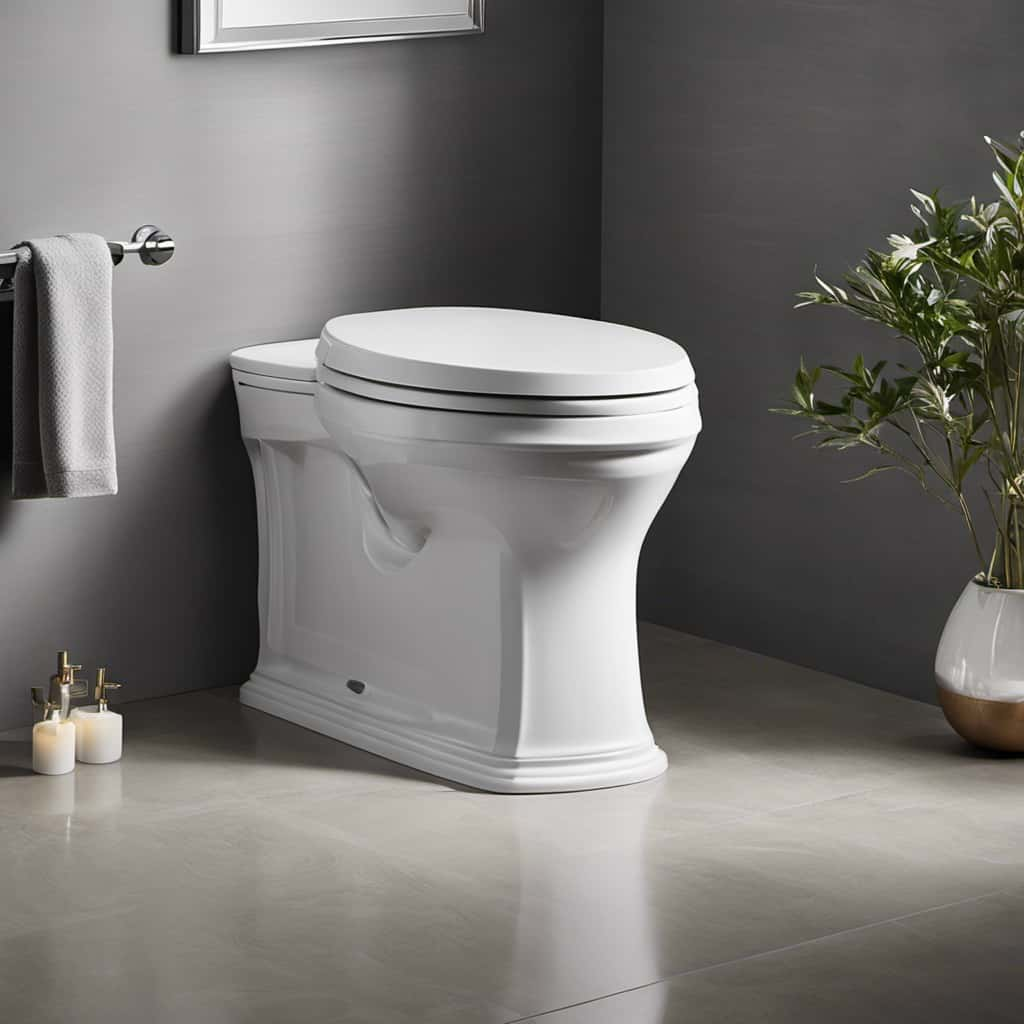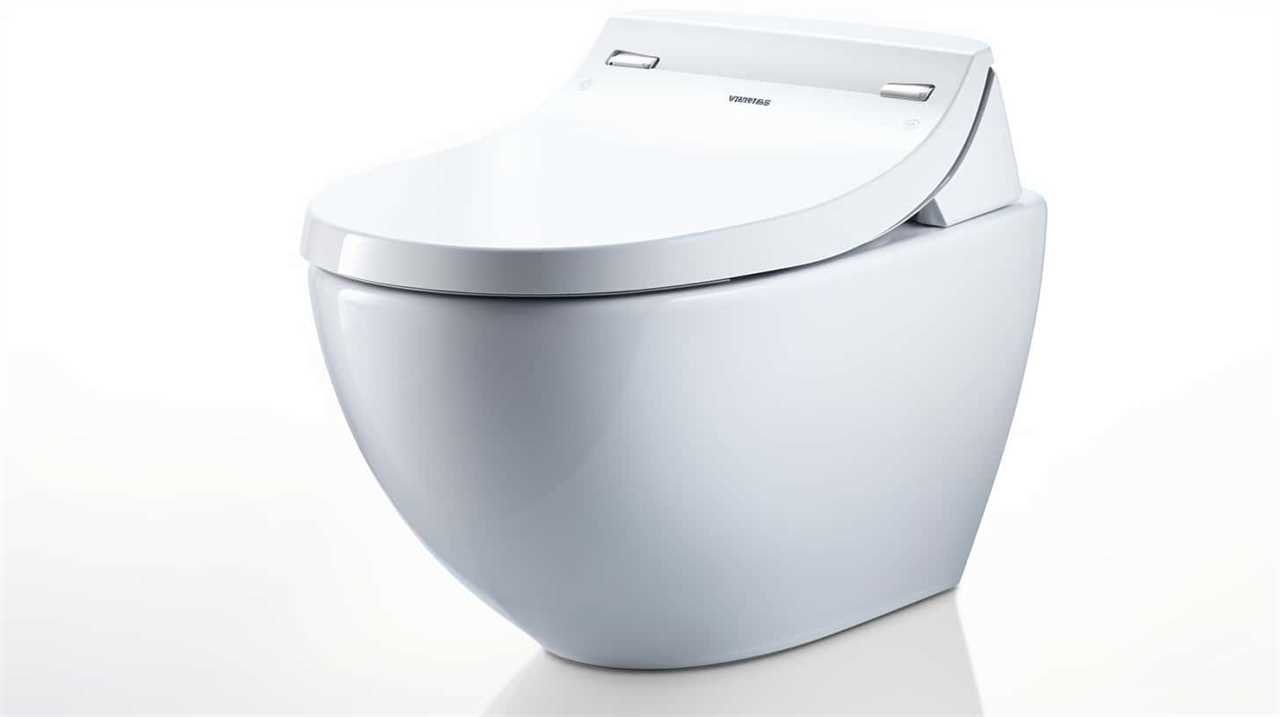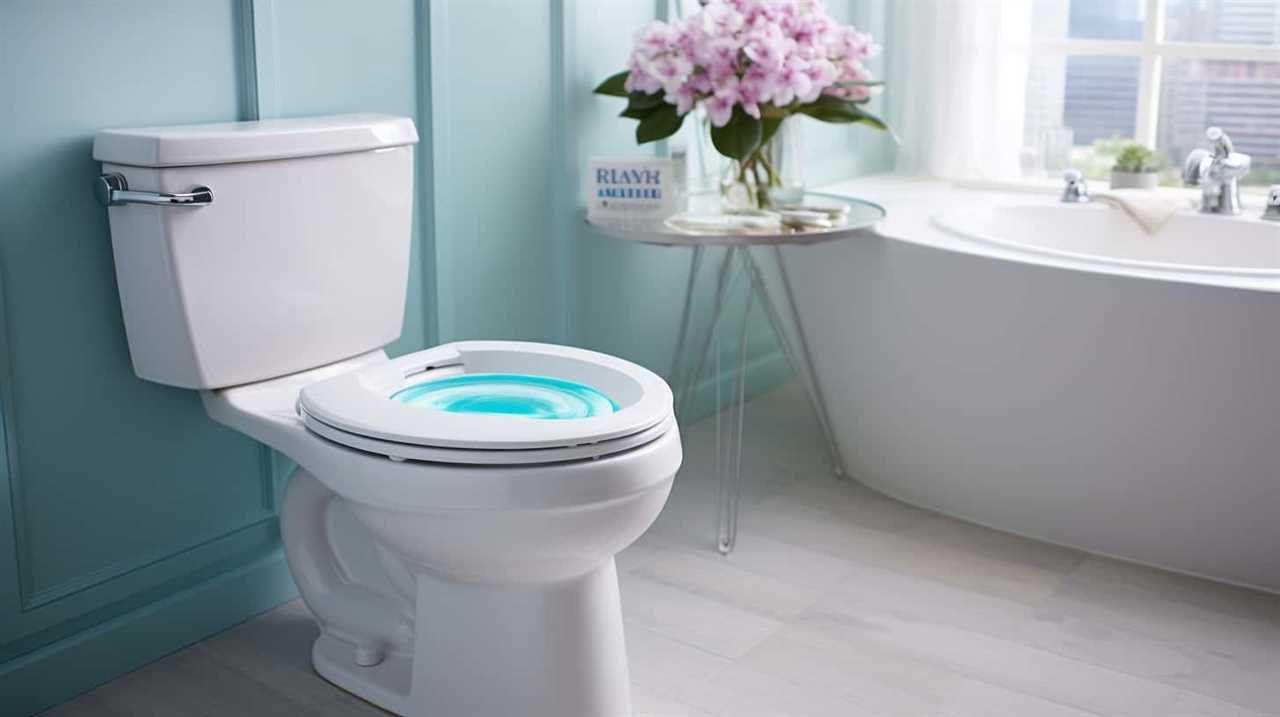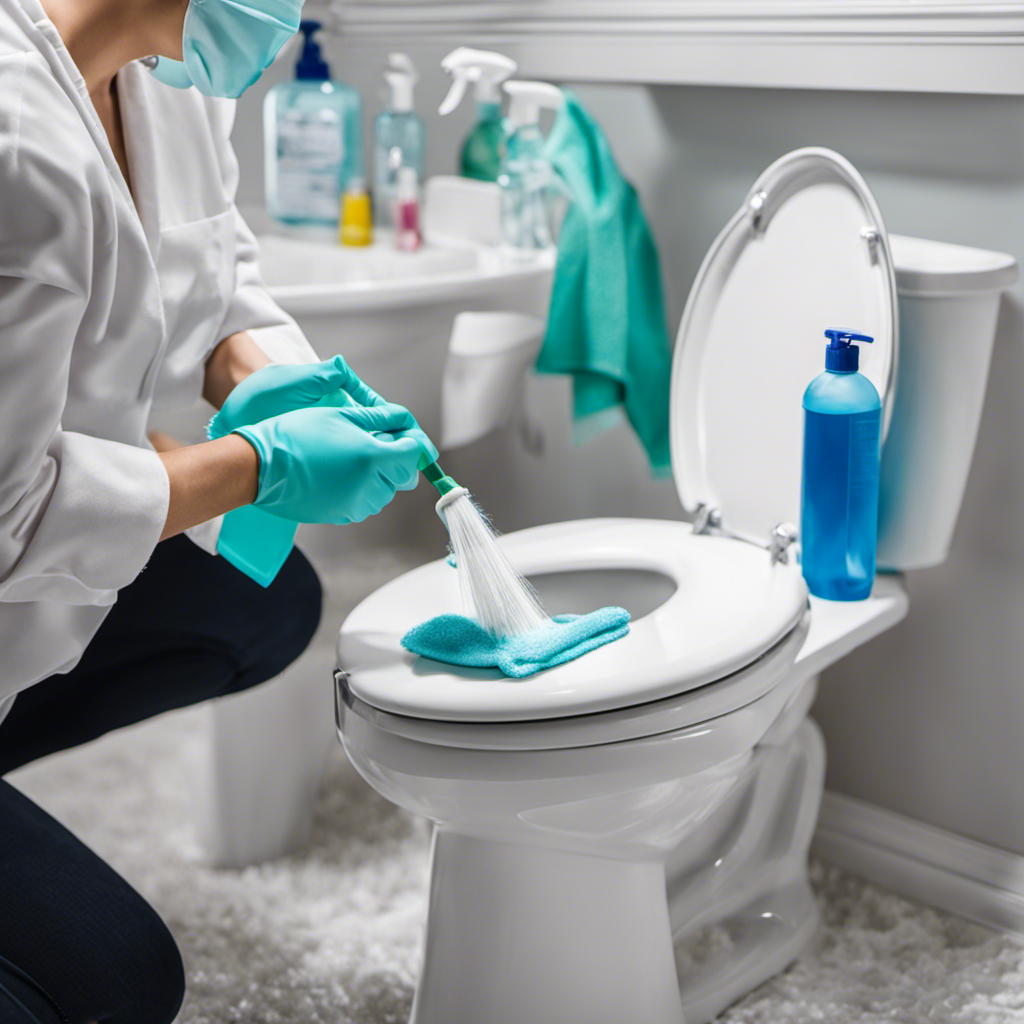Do you ever find yourself frustrated by the need to flush the toilet multiple times? We’ve all been there.
In this article, we’ll delve into the reasons behind inadequate flushes and explore tips to enhance your toilet’s efficiency. By understanding the factors at play and considering alternative solutions, we can find the ideal flush frequency that saves both water and time.
Join us as we uncover the secrets to achieving a powerful, one-and-done flush.
Key Takeaways
- Toilet flush strength is important for waste removal efficiency and preventing clogs.
- Common reasons for inadequate flushes include a clogged trapway, low water level in the tank, and a blocked vent pipe.
- To improve toilet flush efficiency, consider water-saving toilet options, adjust water level in the tank, replace the flapper valve, or install a dual flush conversion kit.
- Finding the right flush frequency is crucial, balancing water conservation and effective waste removal while considering the impact on plumbing systems.
Understanding Toilet Flush Strength
Understanding toilet flush strength is crucial for efficient waste removal. The power of a toilet flush determines how effectively it can clear the bowl and prevent clogs. It’s essential to troubleshoot any issues with flush power to ensure proper functioning.
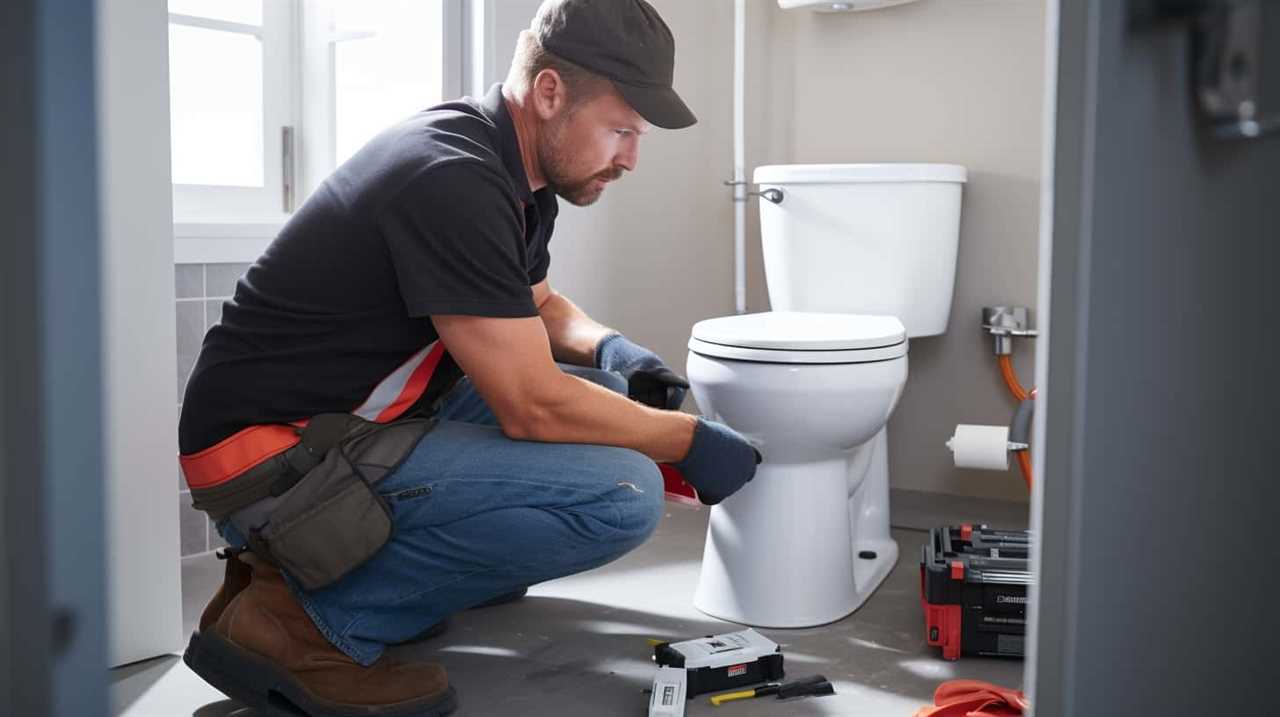
One common problem is a weak flush, which may be caused by a partially clogged trapway or a faulty flapper valve. To address this, check for any obstructions in the trapway and clean it if necessary.
Another issue could be a low water level in the tank, which can be resolved by adjusting the float valve. Additionally, a worn-out flapper valve may lead to a weak flush, requiring replacement.
Understanding and resolving these flush issues will optimize toilet performance and prevent the need for multiple flushes.
Common Reasons for Inadequate Flushes
One of the most common reasons for inadequate flushes is a clogged or partially clogged trapway. The trapway is the curved section of the toilet that connects the bowl to the drainpipe. When it becomes obstructed by debris, such as toilet paper or foreign objects, it restricts the flow of water and can lead to weak flushes or complete blockages. To further understand the common reasons for inadequate flushes, let’s take a look at the table below:
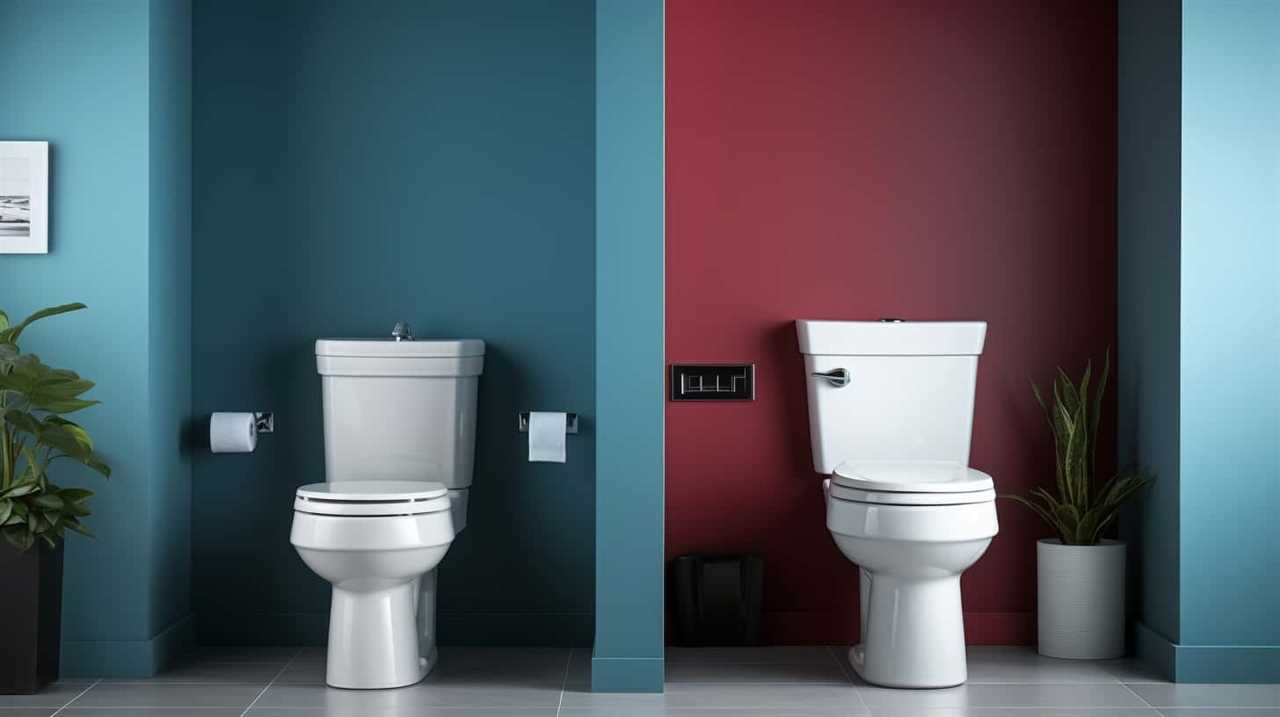
| Common Reasons for Inadequate Flushes | Toilet Clog Prevention |
|---|---|
| Clogged or partially clogged trapway | Regular maintenance and cleaning of the toilet |
| Insufficient water level in the tank | Adjusting the water level or replacing faulty components |
| Blocked or restricted vent pipe | Clearing any obstructions in the vent pipe |
Tips for Improving Toilet Flush Efficiency
To improve toilet flush efficiency, we can implement effective strategies.
One option is to consider water-saving toilet options. These toilets are designed to use less water per flush, reducing water consumption and saving money on water bills. Look for toilets with a low flush volume, typically around 1.28 gallons per flush (GPF) or less.
Another way to improve efficiency is through DIY toilet flush upgrades. Simple upgrades like adjusting the water level in the tank or replacing the flapper valve can help optimize the flush and ensure proper water flow.
Additionally, consider installing a dual flush conversion kit, which allows you to choose between a full flush for solid waste and a partial flush for liquid waste, further conserving water.
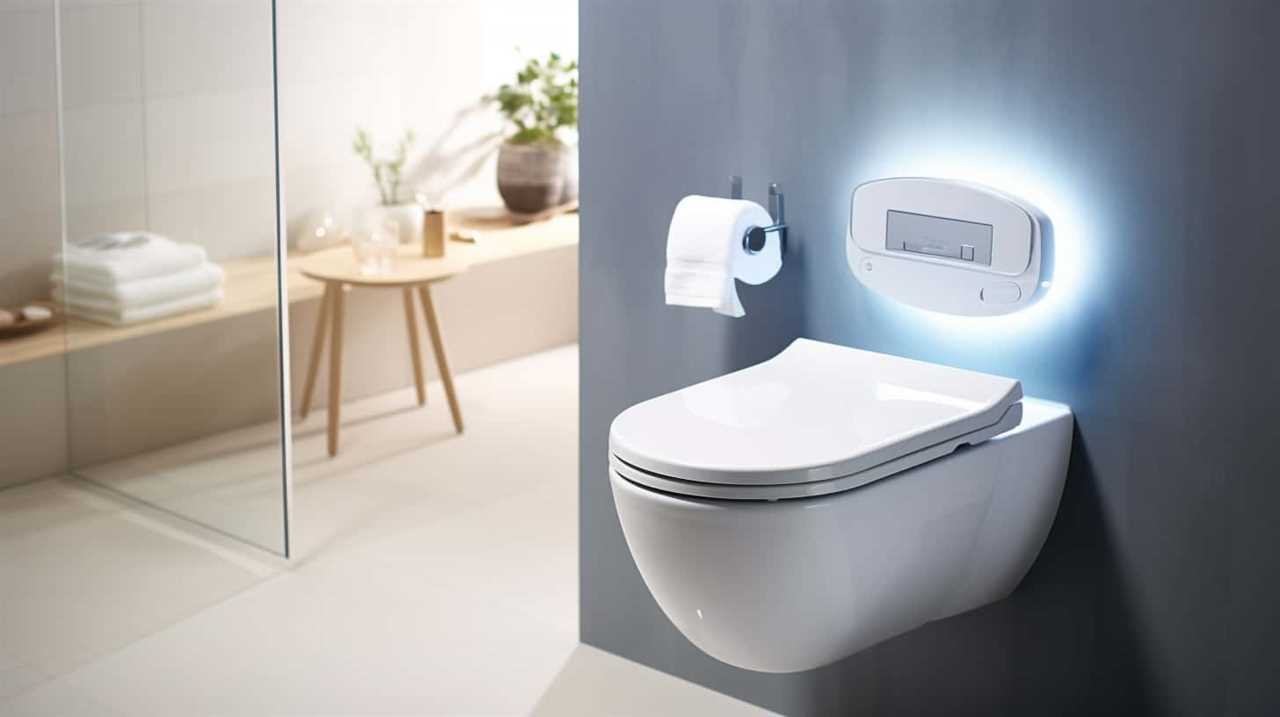
Exploring Alternative Solutions
To continue our discussion on improving toilet flush efficiency, let’s now explore alternative solutions that can help address the issue of having to flush the toilet multiple times.
One effective solution is to consider water-saving toilet options. These toilets are designed to use less water per flush, which not only helps conserve water but also ensures a more efficient flush. Look for toilets with dual-flush mechanisms, allowing you to choose between a full or partial flush depending on your needs.
Another eco-friendly flush alternative is to install a toilet retrofit kit. These kits typically include a new flapper valve and an adjustable flush valve, which can help optimize water usage and improve flushing power.
Conclusion: Finding the Right Flush Frequency
With these water-saving and eco-friendly alternatives, we can find the right flush frequency that promotes efficient and sustainable toilet use.

Evaluating water consumption is crucial in determining the optimal flush frequency. By understanding how much water is used per flush, we can make informed decisions to balance water conservation and effective waste removal.
It’s essential to consider the impact of toilet flush frequency on plumbing systems. Frequent flushing may lead to increased wear and tear on pipes, potentially causing leaks or clogs. On the other hand, infrequent flushing can result in stagnant water and unpleasant odors.
Striking a balance is key to maintaining a healthy plumbing system while minimizing water wastage. By finding the right flush frequency, we can contribute to water conservation efforts and ensure the longevity of our plumbing infrastructure.
Frequently Asked Questions
Can Flushing the Toilet Multiple Times Cause Any Damage to the Plumbing System?
Flushing the toilet multiple times does not cause damage to the plumbing system. However, it does waste water, impacting water conservation efforts and increasing water bills. It is important to be mindful of our flushing habits.
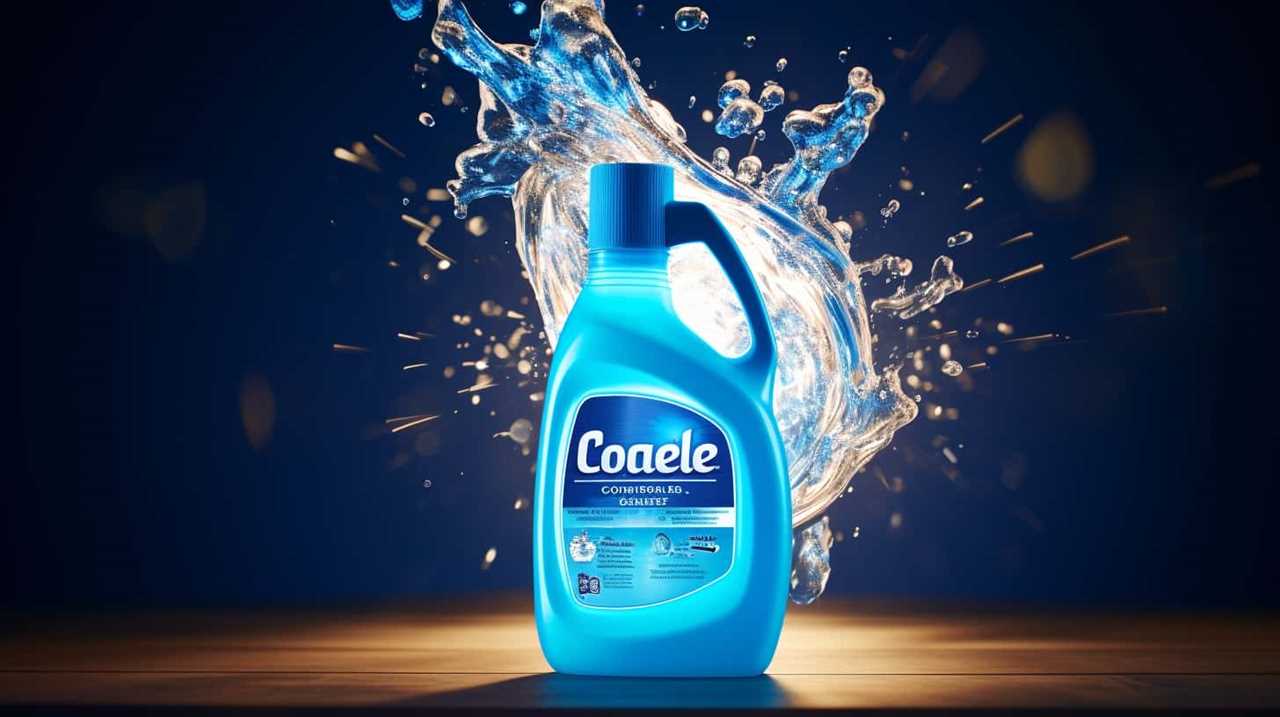
Are There Any Health Risks Associated With Flushing the Toilet Multiple Times?
There can be health risks associated with flushing the toilet multiple times, such as the spread of germs and bacteria. Additionally, excessive flushing can lead to increased water consumption, impacting both the environment and utility bills.
Can Using Too Much Toilet Paper Lead to the Need for Multiple Flushes?
Using excessive toilet paper can lead to plumbing issues and is not environmentally friendly. It may require multiple flushes to prevent clogs. Properly managing toilet paper usage is essential for maintaining a healthy and efficient plumbing system.
Are There Any Measures We Can Take to Prevent the Need for Multiple Flushes?
To minimize the need for multiple flushes, we can employ effective toilet flushing techniques, such as holding down the handle longer or using a plunger if necessary. Additionally, upgrading to water-saving toilets can greatly reduce water wastage.
Is It Necessary to Use a Specific Type of Toilet Paper to Ensure Proper Flushing?
To ensure proper flushing, it is not necessary to use a specific type of toilet paper. However, using high-quality toilet paper can reduce the risk of clogs and minimize the environmental impact.
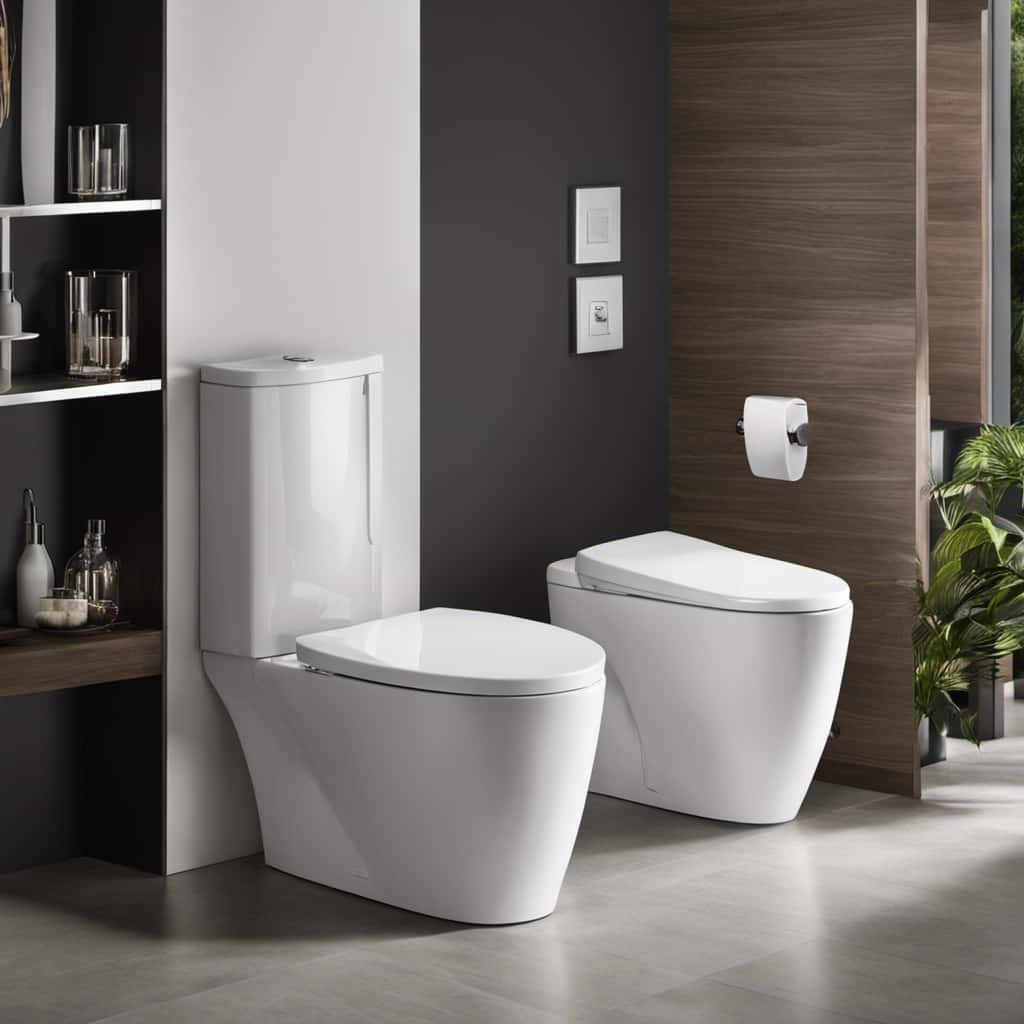
Conclusion
In conclusion, understanding toilet flush strength is key to addressing the issue of having to flush multiple times.
By identifying common reasons for inadequate flushes and implementing simple tips for improving toilet flush efficiency, such as adjusting the water level or cleaning the siphon jet, you can reduce the need for multiple flushes.
Additionally, exploring alternative solutions like dual-flush toilets or pressure-assisted toilets may also provide a more efficient flushing experience.
Ultimately, finding the right flush frequency will ensure a more effective and environmentally friendly toilet usage.
